Yellow Oxeye Telekia speciosa
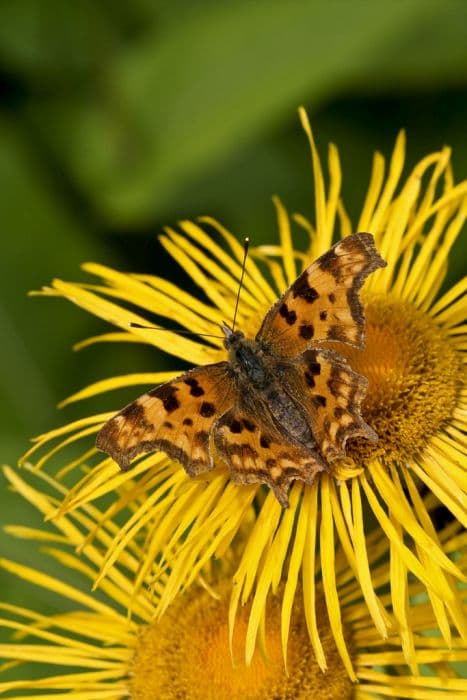
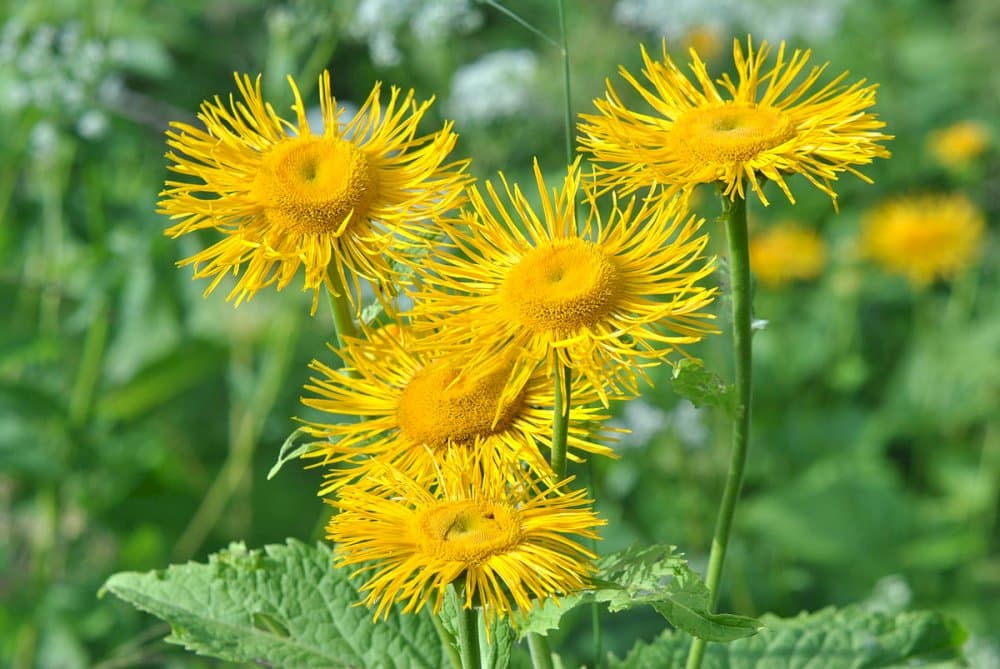
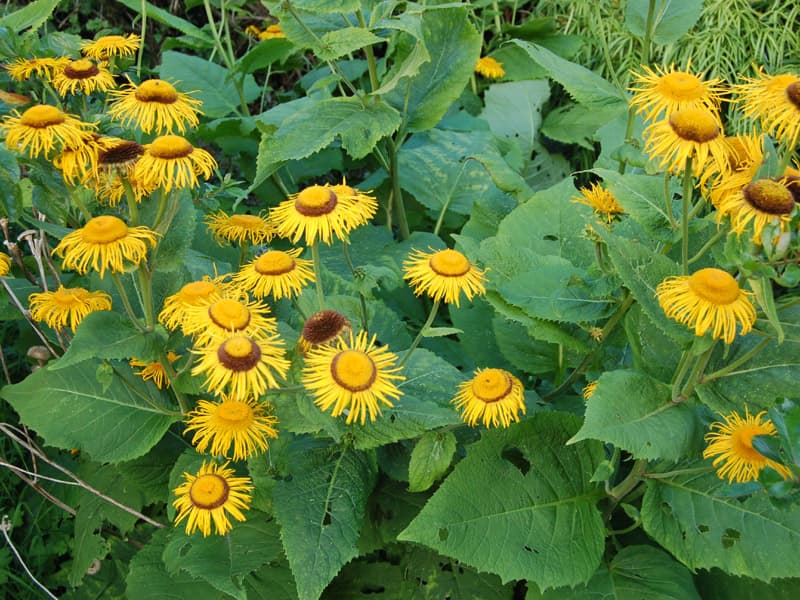
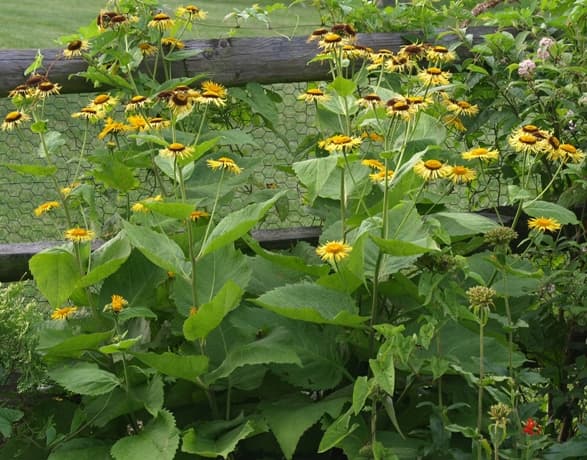
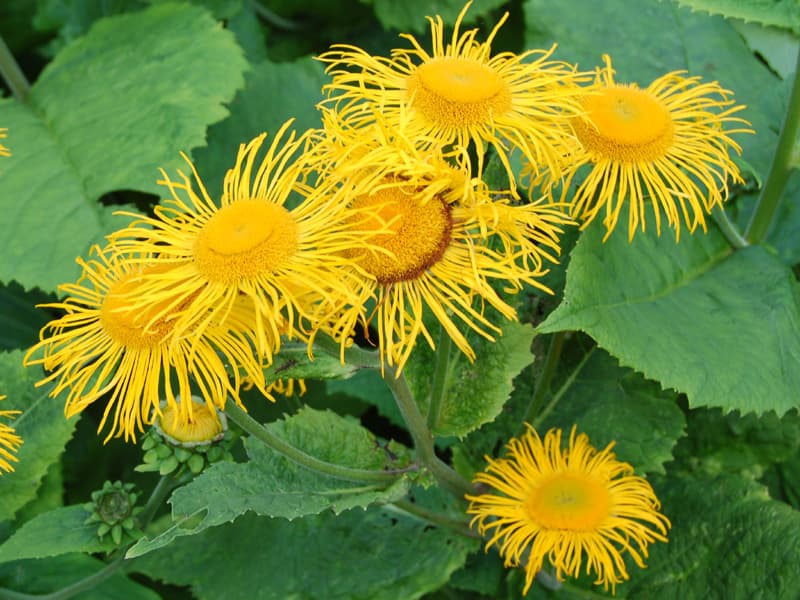
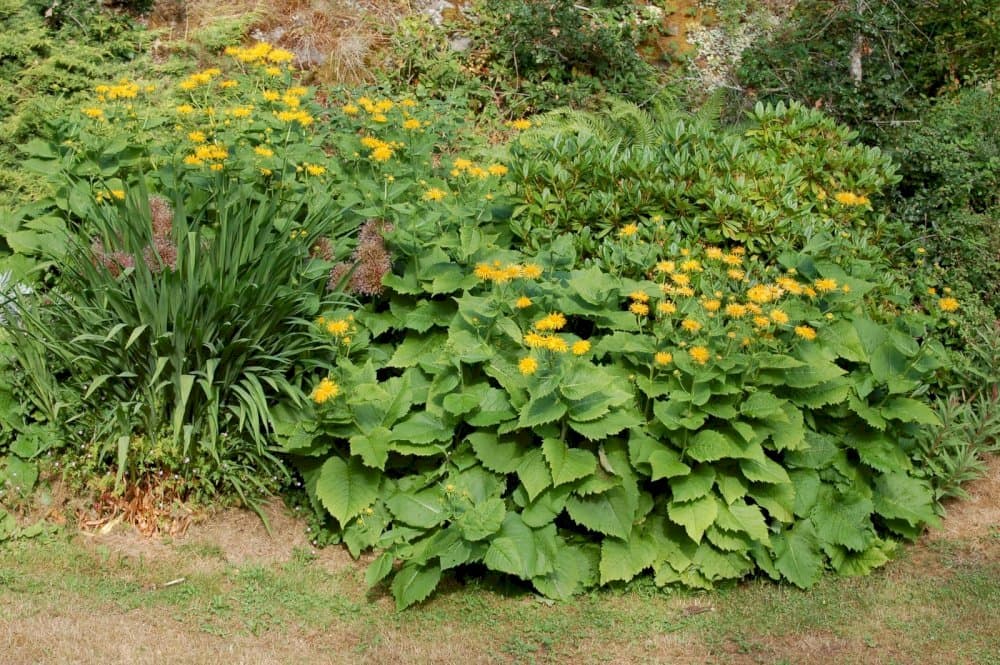

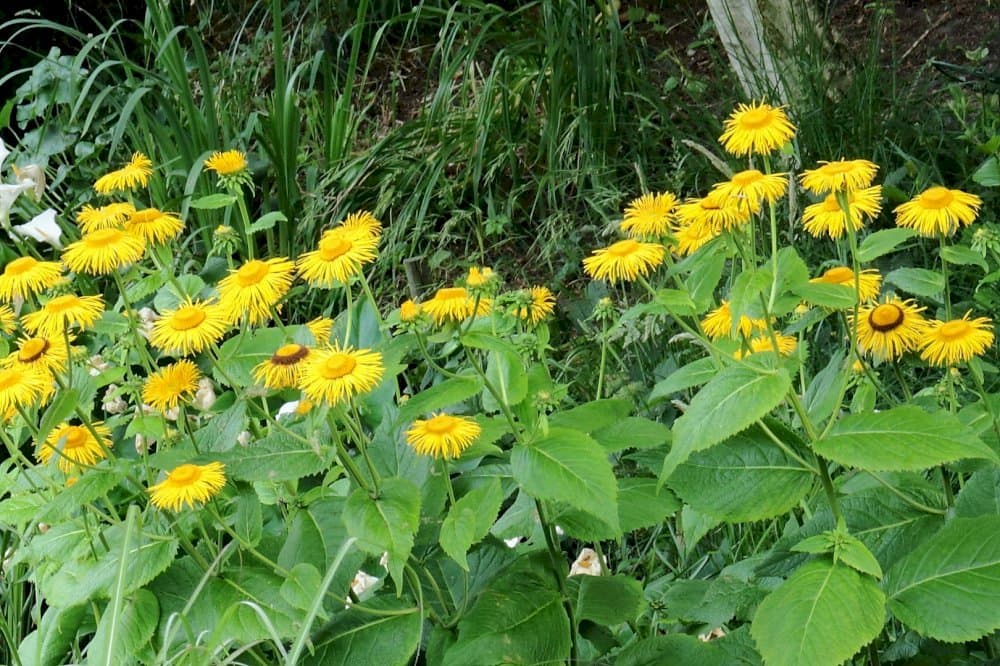
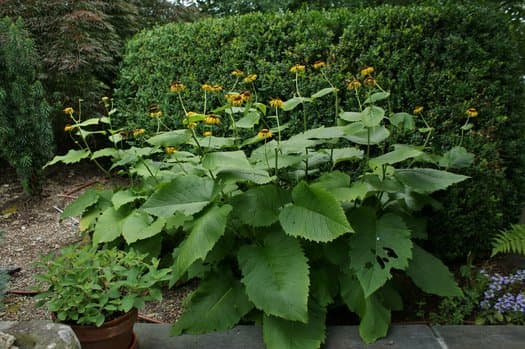
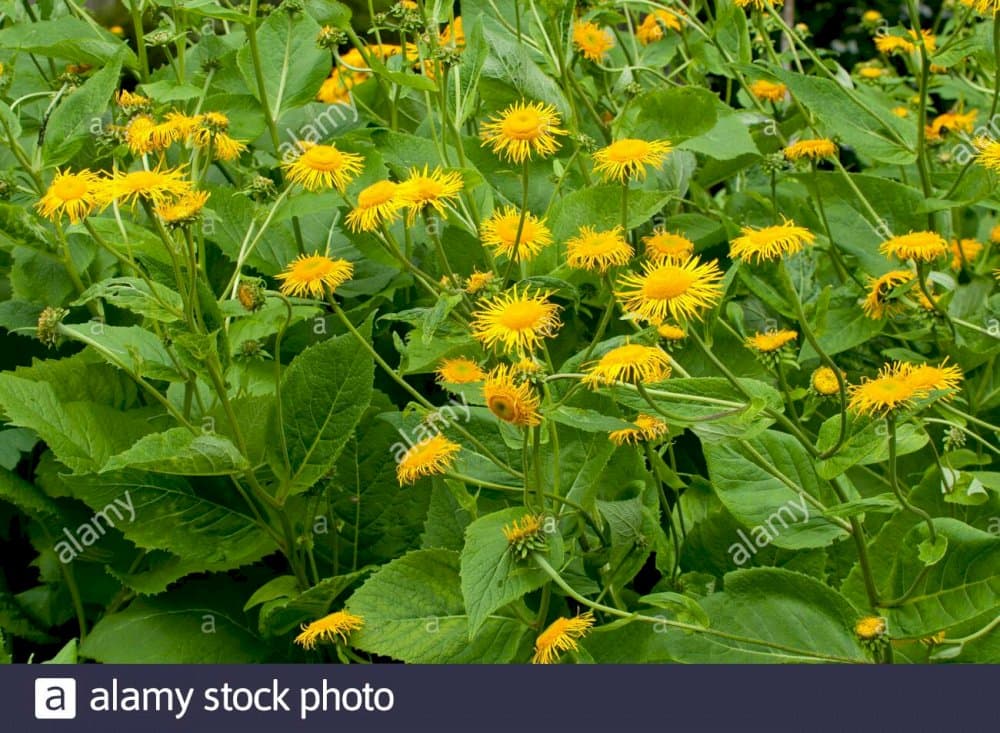
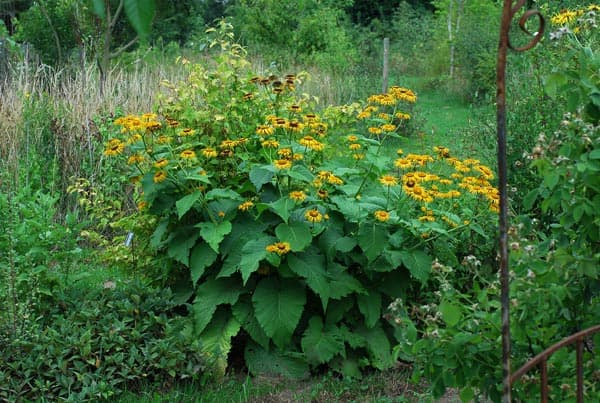
ABOUT
The Telekia speciosa, most commonly known as the Heartleaf Oxeye or simply Oxeye, is a striking perennial plant recognized for its distinctive foliage and flowers. It bears large, heart-shaped leaves that are rough in texture with toothed edges, giving them a somewhat jagged appearance. These leaves often have a rich green hue that provides a lush backdrop for the bright yellow blooms. The flowers resemble those of sunflowers or daisies, featuring a prominent central disk surrounded by radiating petals. Each petal is narrow and elongated, contributing to the overall starburst effect of the inflorescence. The blooms are particularly eye-catching when they form dense clusters, creating a vivid splash of color that can enliven any garden setting. The plant generally exudes a rustic and robust charm, with its foliage and blossoms contributing to its ornamental appeal.
About this plant
 Names
NamesSynonyms
Oxeye, Heartleaf Oxeye, Yellow Oxeye, Heart-leaved Oxeye, Showy Telekia.
Common names
Buphthalmum speciosum, Telekia cordifolia, Telekia cordata.
 Toxicity
ToxicityTo humans
Telekia speciosa, commonly known as heartleaf oxeye, is not widely recognized as a toxic plant to humans. There is limited information available on its toxicity, indicating that it is not commonly associated with poisoning when touched or ingested. However, as with many plants, it is possible that some individuals may experience an allergic reaction or sensitivity to this plant. As a general precaution, it is not advised to ingest any part of a plant unless you are certain it is safe to eat.
To pets
Heartleaf oxeye is not commonly known to be toxic to pets. There are no well-documented cases of poisoning in pets (such as dogs and cats) from ingestion of Telekia speciosa. However, since pets can have sensitivities to plants that humans might not, it is advisable to prevent pets from ingesting this plant. If a pet ingests part of the plant and exhibits signs of illness, it is important to consult a veterinarian.
 Characteristics
CharacteristicsLife cycle
Perennials
Foliage type
Deciduous
Color of leaves
Green
Flower color
Yellow
Height
5 feet (1.5 meters)
Spread
2 feet (0.6 meters)
Plant type
Herb
Hardiness zones
5
Native area
Europe
Benefits
 General Benefits
General Benefits- Attracts Pollinators: Telekia speciosa is known for attracting bees, butterflies, and other beneficial insects, which play a crucial role in pollination.
- Aesthetic Appeal: The plant adds visual interest to gardens with its large, bright yellow flowers and lush green foliage.
- Easy to Grow: It is relatively easy to cultivate and can grow in a range of soil types, albeit preferring moist, well-drained conditions.
- Sunlight Tolerance: The plant is adaptable to both full sun and partial shade, making it versatile for various garden locations.
- Tolerance to Conditions: It is resistant to many pests and diseases, reducing the need for chemical treatments.
- Wildlife Habitat: Can provide shelter and food for small wildlife, contributing to biodiversity in the garden.
- Long Blooming Period: It has a lengthy flowering season that lasts from early summer to early autumn, offering long-lasting garden interest.
 Medical Properties
Medical Properties- Anti-inflammatory: Telekia speciosa may be used for its anti-inflammatory properties, potentially helping to reduce inflammation.
- Wound healing: There is some indication that the plant could be used to promote wound healing due to its possible beneficial compounds.
- Antimicrobial: The plant has been investigated for antimicrobial activities, which could help in treating infections.
 Air-purifying Qualities
Air-purifying QualitiesThis plant is not specifically known for air purifying qualities.
 Other Uses
Other Uses- Telekia speciosa, commonly known as Yellow Oxeye, can serve as a natural dye, with various parts of the plant yielding different shades on textiles.
- The Yellow Oxeye's large leaves can be used in floral arrangements or for pressing as part of botanical art activities.
- The sturdy stalks of the Yellow Oxeye can be dried and used for crafting, such as in homemade paper or as support structures in decorative items.
- The plant's natural resistance to pests and insects can make it a companion plant in gardens to help protect more vulnerable species.
- Yellow Oxeye can play a role in soil stabilization on slopes and banks, as its root system helps to prevent erosion.
- The plant can also be used as a natural indicator of soil quality, as it tends to grow in places with high soil fertility.
- With its attractive flowers, Yellow Oxeye is beneficial for supporting local bee populations and other pollinators in the ecosystem.
- In rural traditions, the flowers of Yellow Oxeye were sometimes used to decorate homes during festivals and celebrations.
- The dense foliage of Yellow Oxeye can create natural hiding spots or microhabitats for small wildlife within a garden setting.
- For educational purposes, the Yellow Oxeye can be used to demonstrate the lifecycle of a perennial plant to students and gardening enthusiasts.
Interesting Facts
 Feng Shui
Feng ShuiThe Telekia speciosa, also known as Oxeye, is not used in Feng Shui practice.
 Zodiac Sign Compitability
Zodiac Sign CompitabilityOxeye is not used in astrology practice.
 Plant Symbolism
Plant Symbolism- Resilience: Telekia speciosa, commonly known as Yellow Oxeye, often thrives in tough conditions, symbolizing the ability to persist and adapt in challenging environments.
- Brightness: The plant's bright yellow flowers can symbolize positivity and a sunny disposition, much like the sunflower.
- Attractiveness: With its striking appearance, the Yellow Oxeye can symbolize allurement and charm, attracting not just pollinators, but also human admirers.
 Water
WaterThe heartleaf oxeye should be watered when the top inch of soil feels dry to the touch, typically once a week. This plant prefers consistent moisture, so providing it with approximately 1 gallon of water per week is adequate. During hot or dry periods, the frequency may increase to two or three times per week, and during the cooler months, less frequent watering may be necessary. It’s crucial to avoid waterlogging the soil, so ensure good drainage and reduce watering if the soil doesn’t dry out between sessions.
 Light
LightHeartleaf oxeye thrives best in full sun to partial shade. It should be placed in a location where it can receive at least four to six hours of sunlight daily. Although it tolerates partial shade, too much shade can lead to leggy growth and fewer flowers, so a spot that offers a good balance of light and shade throughout the day is ideal.
 Temperature
TemperatureHeartleaf oxeye is hardy and can withstand a broad range of temperatures, but it performs best when the temperature is between 60°F and 75°F. It can survive minimum temperatures down to 20°F and maximum temperatures up to 90°F. Providing mulch can help to regulate soil temperature and protect the plant during extreme temperature fluctuations.
 Pruning
PruningHeartleaf oxeye benefits from pruning to remove spent flower heads and encourage additional blooming. Pruning should take place after the first wave of flowering, typically in late summer or early fall. Cutting the plant back by one-third helps to maintain its shape and vigor. If necessary, light pruning can also be done in the spring to remove any winter-damaged foliage.
 Cleaning
CleaningAs needed
 Soil
SoilHeartleaf oxeye thrives in organically rich, well-draining soil with a pH ranging between 6.0 and 7.5. A mixture of loamy garden soil, compost, and a small amount of sand or perlite makes the best soil mix to accommodate this plant's needs.
 Repotting
RepottingHeartleaf oxeye typically does not require frequent repotting. It can be repotted every 2 to 3 years to replenish soil nutrients and to accommodate growth, if grown in a container.
 Humidity & Misting
Humidity & MistingHeartleaf oxeye prefers moderate humidity levels but is adaptable to various conditions. No specific humidity requirements are necessary for this hardy perennial.
 Suitable locations
Suitable locationsIndoor
Ensure bright light, space, and moist, rich soil for indoor Heartleaf oxeye.
Outdoor
Plant in partial sun, moist soil, and provide space for spread.
Hardiness zone
Heartleaf oxeye is suitable for USDA zones 5-9.
 Life cycle
Life cycleTelekia speciosa, commonly known as the Heartleaf Oxeye or Yellow Oxeye, begins its life cycle as a seed, which when sown, will germinate under appropriate conditions of warmth and moisture. The seedling emerges with cotyledons (seed leaves) before it develops true leaves and establishes a root system. As a perennial, the plant enters a vegetative state where it grows foliage - large, heart-shaped leaves - and develops its rootstock more extensively. Over time, the Heartleaf Oxeye reaches maturity and in the summer months, it produces conspicuous yellow daisy-like flowers that attract various pollinators. After pollination, the flowers develop into achenes (fruits) containing seeds, which are dispersed by wind, water, or animals, ensuring the propagation of the species. The plant may die back to the ground in winter, with the roots remaining dormant until conditions favor new growth in the spring.
 Propogation
PropogationPropogation time
Spring-Early Summer
The most popular method of propagation for Telekia speciosa, commonly known as the Oxeye, is through seed. Seeds can be sown directly in the ground in fall, allowing nature's cycle to stratify the seeds naturally over winter. Alternatively, for a controlled environment, seeds can be stratified by placing them in a cold place, between 32°F and 41°F (0°C to 5°C), for several weeks before sowing in spring. Once stratified, sow the seeds in well-drained soil, lightly covered, and keep them moist until germination, which usually occurs within two to three weeks. Seedlings can then be transplanted to their final location once they have developed true leaves and are big enough to handle.









